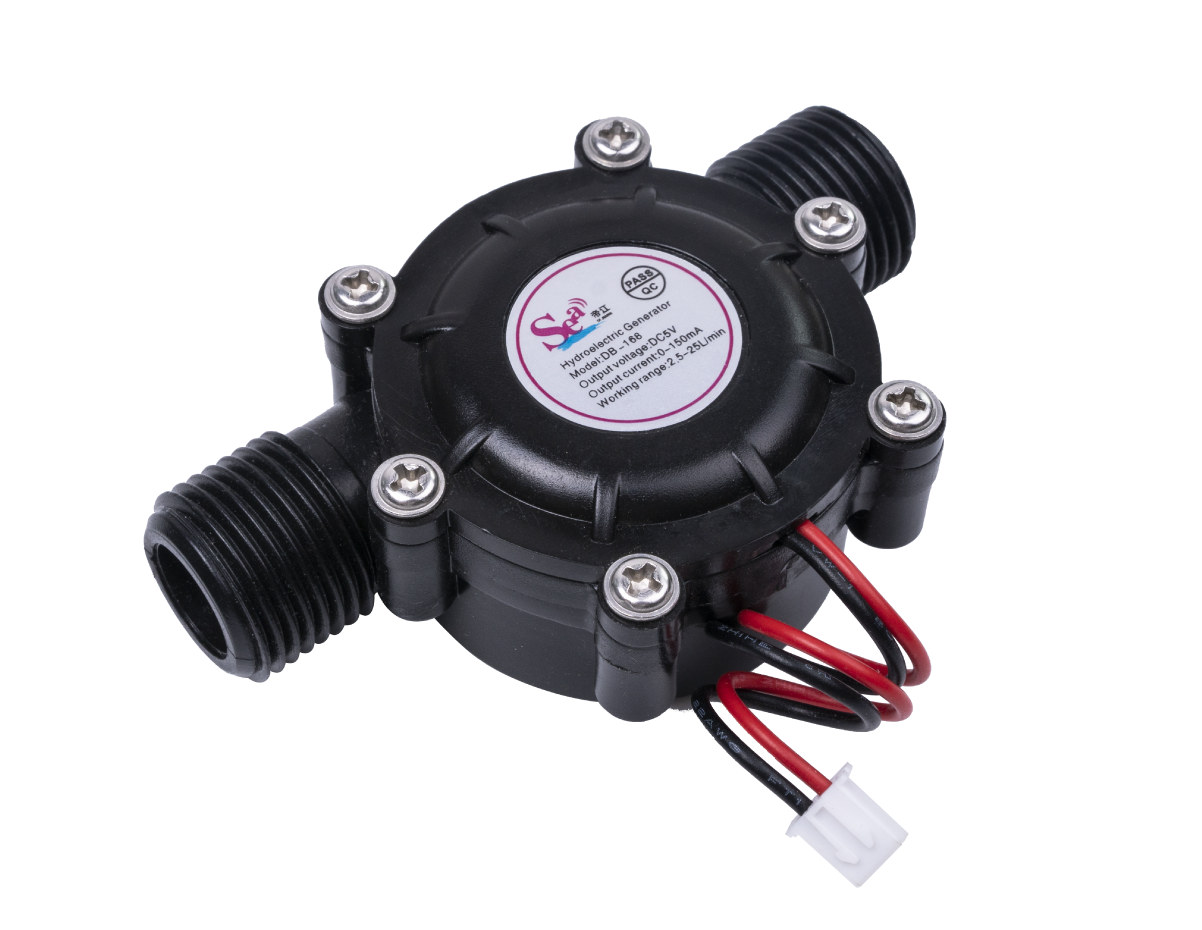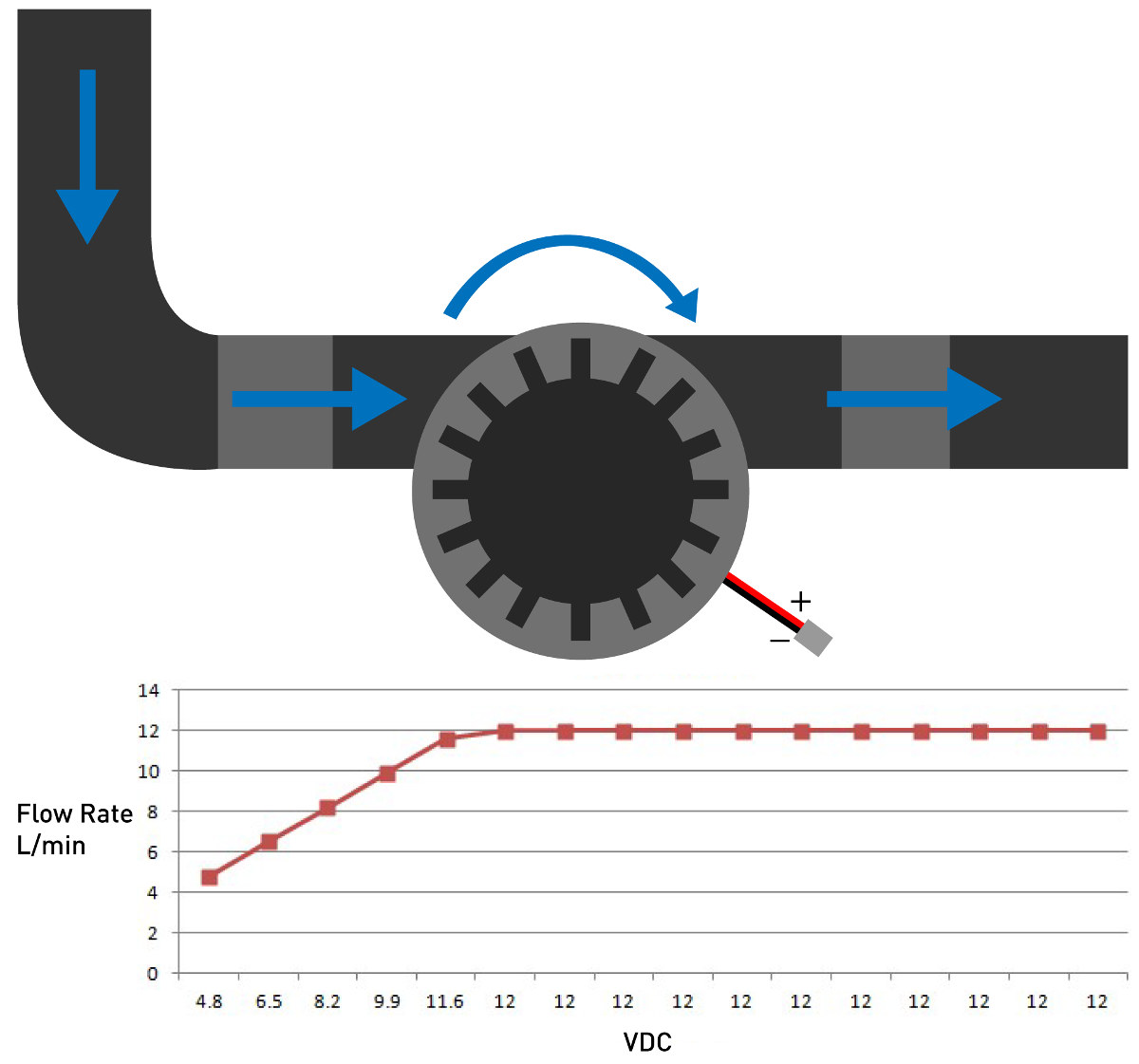I follow some online IoT groups, and many of the projects are related to smart farming and greenhouses. People may want to monitor temperature and humidity and other environmental factors using battery-powered sensors.
If there are many of those sensors, this can be cumbersome to either replace or recharge batteries, and that increases maintenance costs. But since plants usually need to be watered there should be some water pipes around, and I’ve just found out some low-cost micro water turbines that can generate 5V or 12V when connected to a water pipe and water flows.

- Output Voltage
- 5V model
- 5 +/- 0.3 VDC water flow 10+ L / min
- 3 to 5 +/- 0.3 VDC Water flow 4L / min
- 3 +/- 0.25 VDC Water flow 3.5L / min
- 12V model
- 12 +/- 0.3 VDC water flow 10+ L / min
- 5 12 +/- 0.3 VDC Water flow 4L / min
- 3 +/- 0.25 VDC Water flow 3.5L / min
- 5V model
- G1/2” Thread
- Flow range – 3.5 to 20L / min (pressure 0.05-0.2mpa)
- Maximum Output Current – 150mA
- Resistance Between Line – 10.5 ± 0.5Ω
- Insulation Resistance – 10MΩ
- Maximum Working Pressure – 1.2 Mpa
- Outlet Closed Highest Pressure Resistance – 0.6Mpa
- Start Water Pressure – 0.05Mpa
- Axial Clearance – Approx. 0.2~1.0mm
- Mechanical Noise – ≤ 55dB
- Generator Single Volume – 90g
- Generator Life – ≥ 3000 hours
- Working Temperature Range – 0 80 ° C
- Storage temperature – -25 65 ° C
- Maximum allowable ambient temperature – 100 ° C max for 30 min
The microturbine embeds some small blades to make the turbine rotate and generate electricity. Note that with a maximum current of 150mA, charging won’t be fast, so those models are only really suitable for low power devices. The output voltage also depends on the flow rate as shown in the chart below.

It can be connected to a faucet or at the bottom of a water tank to ensure enough pressure, although it might also be possible to use rainwater as well depending on the size of the roof and amount of precipitations in the area.
You’d have to use the generator with a battery accompanied by a charge management chip:
There are two kinds of lithium batteries in the market, one with the charge management chip and one without the charge management chip. The charge management chip is needed for charging lithium batteries or otherwise will easily explode.
If you are interested Seeed Studio sell either 5V or 12V micro water turbine for $6.90 plus shipping. You’ll also find various micro-hydro generators on Aliexpress, Banggood, and other websites.

Jean-Luc started CNX Software in 2010 as a part-time endeavor, before quitting his job as a software engineering manager, and starting to write daily news, and reviews full time later in 2011.
Support CNX Software! Donate via cryptocurrencies, become a Patron on Patreon, or purchase goods on Amazon or Aliexpress




